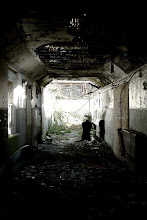Propp concluded that out of all the Fairy Tales he analysed, there would always be 7 steriotypical character types in each tale, these were:
1. The Villain - who would fight against the Hero
2. The Donor - provides the Hero with what they need (help/object)
3. The Hero - allows the Donor to help, marries the Princess
4. The Helper - aids the Hero on the adventure
5. The Princess & Father - identifies the task for the Hero. Is a object for Villain and reward to Hero, usually also identifies the False Hero
6. The Dispatcher - sends the Hero on his adventure
7. The False Hero - will attempt to marry the Princess and take credit for Hero's actions.
31 Functions.
The introductory sequence:
1. Absentation - A family member leaves the story/absents from the home, which allows the Hero to be introduced as a normal charcter so the audience is able to relate to him/her.
2. Interdiction - A warning not to do something is introduced to the Hero which reflects also to the audience of this danger.
3. Interdiction is Violated - The Hero ignores the warning, allowing the Villian to be introduced in some wayand creating a dramatic irony in the storyline.
4. Reconnaissance - The Villain usually in disguise, attmepts to find the Hero's reason for the quest and seek information which adds extra tension to the story.
5. Delivery of Information - The Villain gains valuable information about the Hero's whereabouts or prize. This shows the gain the Villain has acquired creating tense anticipation for the Hero in hope the story won't end in tragedy.
6. Trickery - The Villain attempts to decieve the Hero with trickery by usually taking possession of something close to the Hero trying to win the confidence of the Victim. Deception and betrayal raises tension as we fear for the Victim and Hero as we are now fully aware of the Villain's ideas.
7. Complicity - The Hero is deceived and unwittingly helps the Villain with the unintentional help form the Victim. We worry for the reputation of the Hero in concern that he will not win the love of the Princess.
The Body of the story:
8. Villainy - The Villain causes harm/injury to a victim/faimily member or steals the desired object that the Hero needs.
9. Mediation - The Hero discovers the harm or loss that the Villain has caused and calls for help making the audience wonder what will happen now.
10. Counteraction - The Hero finds a way to resolve the problem and solve the lack. Here the Villian is usaully defeated causing this defining moment to make us realise the ordinary person has a aspect of heroism. We see, as the audience that there is now no turning back.
11. Departure - The Hero leaves for home.
The Donor sequence:
12. First function of the Donor - The Hero is questioned and interrogated, preparing him/her for the magical helper (Donor)
13. Hero's Reaction - The Hero responds to the actions of the Donor.
14. Receipt of Magical Agent - Hero receives a magical object/agent (help) that will aid him/her in their adventure.
15. Guidance - Hero is shown to where the object/help can be found.
16. Struggle - Hero and Villain come into direct combat.
17. Branding - Hero is branded as wounded or marked.
18. Victory - Villain is defeated.
19. Liquidation - The object or initial misfortune is found by the Hero.
The Hero's return:
20. Return - Hero returns.
21. Pursuit - Hero is pursued by someone who plans to kill.
22. Rescue - Hero is rescued from pursuit (Tale sometimes can end here).
23. Unrecognized Arrival - Hero arrives home or in another country.
24. Unfound Claims - False Hero claims success of actual Hero.
25. Difficult Task - Difficult task is proposed to the Hero through a series of challenges.
26. Solution - The task is completed/resolved.
27. Recognititon - The true Hero is recognised.
28. Exposure - The False Hero or Villain is uncovered.
29. Transfiguration - Hero is given new appearance such as new garments.
30. Punishment - The Villain is punished.
31. Wedding - The Hero is rewarded or promoted usually by ascending thte throne and gaining the Princess' love.





No comments:
Post a Comment